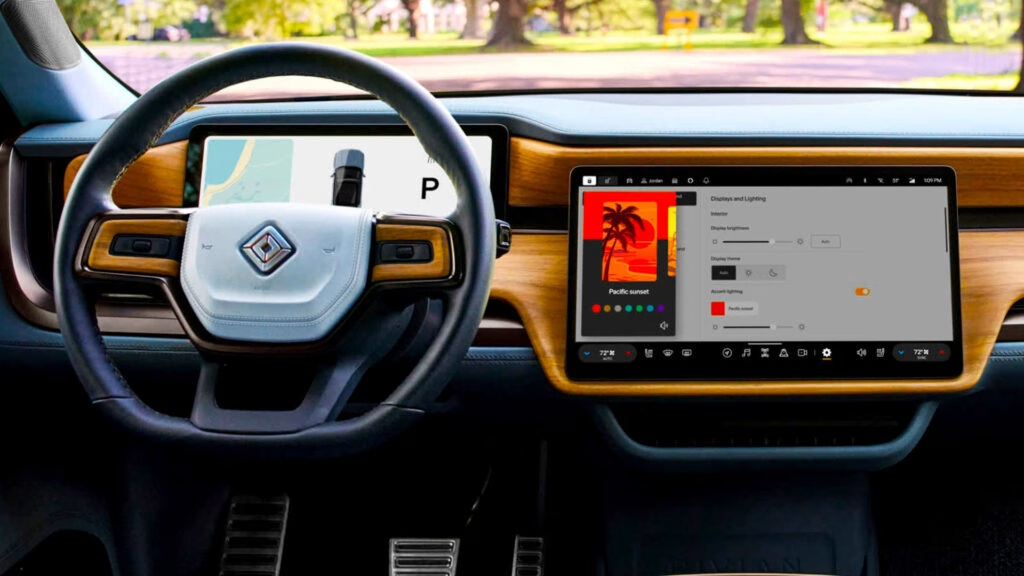What Is Rivian’s Steer-by-Wire System and Why Does It Matter?
Imagine turning your steering wheel and, instead of a mechanical shaft connecting you to the front wheels, your input is translated into digital signals. That’s the essence of steer-by-wire, and Rivian is betting big on it. Unlike traditional systems, steer-by-wire eliminates the physical connection between the steering wheel and the wheels themselves. Instead, sensors and actuators interpret your movements and relay them electronically.
This isn’t just a tech flex. For automakers like Rivian, it’s a chance to rethink how cars are designed from the ground up. By removing the bulky steering column, engineers gain new freedom in packaging—think more flexible cabin layouts, improved crash safety, and even the possibility of fold-away steering controls for future autonomous modes. The result? Pure magic. Or at least, that’s the promise.
How Does Steer-by-Wire Actually Work in Real Cars?
Let’s get practical. In most vehicles today, turning the wheel physically rotates a shaft, which moves the front wheels. Steer-by-wire replaces all that with sensors, wiring, and electronic actuators. When you turn the wheel, the system instantly calculates how much to move the tires, factoring in speed and other conditions.
Tesla’s Cybertruck, for example, uses three independent sensors to read the driver’s input, then instructs the wheels accordingly. This approach isn’t just theoretical—commercial aviation has relied on similar systems for decades, and their reliability is well documented. According to a 2023 report from the Federal Aviation Administration, fly-by-wire systems have contributed to a significant reduction in mechanical failures in modern aircraft.
What’s Rivian’s Unique Approach to Steer-by-Wire?
Rivian isn’t just copying what’s out there. The company recently posted a job listing for a Senior Staff Technical Program Manager to oversee its steer-by-wire project, signaling a serious commitment to in-house development. Whoever lands the role will manage everything from supplier relationships to risk management and quality control. In other words, Rivian wants full control over how this technology is integrated, tested, and rolled out.
This level of ownership could help Rivian avoid some of the teething issues seen in early steer-by-wire implementations. For instance, while Tesla’s system has earned praise for innovation, it’s also faced criticism for inconsistent feedback and learning curves for drivers. By managing the entire process, Rivian aims to deliver a system that feels natural and inspires confidence, even for those new to the technology.
Why Are Automakers So Interested in Steer-by-Wire Now?
There’s a reason we’re seeing a surge of interest in steer-by-wire. Beyond the packaging perks, the technology enables variable steering ratios—meaning the amount you turn the wheel can translate to different responses depending on speed or driving mode. At low speeds, a small turn could mean a sharp maneuver, making parking a breeze. On the highway, the same movement results in gentle corrections, boosting stability.
This adaptability is a game changer, especially as cars become more software-defined. Automakers can tailor steering feel to different models, or even update it over the air. According to a 2024 study by McKinsey & Company, more than 60% of automotive engineers believe steer-by-wire will be standard in premium vehicles within the next decade, citing flexibility and future-proofing as key drivers.
Are There Any Real-World Drawbacks or Concerns?
Let’s be honest—no new tech is without its skeptics. Some drivers worry about losing the direct, mechanical connection they’re used to. What happens if the electronics fail? Automakers address this with multiple layers of redundancy, backup power supplies, and fail-safe modes. In aviation, these systems have proven their worth, but cars face different challenges: potholes, road salt, and the unpredictability of daily driving.
Early steer-by-wire systems, like those in the Lexus RZ and Tesla Cybertruck, have faced mixed reviews. Some drivers love the futuristic feel and precision; others find the lack of feedback disconcerting. It’s a learning curve, no doubt. But as more drivers experience the benefits—like easier parking and customizable steering feel—acceptance is likely to grow.
When Will We See Steer-by-Wire in Rivian’s Vehicles?
Rivian hasn’t announced a specific launch date, but all signs point to a rollout in the next year or two. The company describes steer-by-wire as a critical technology that will define the future of its vehicles, suggesting it will appear across multiple models. Given the pace of development and the competitive landscape, don’t be surprised if Rivian’s next big release features this tech front and center.
The Big Takeaway? Steer-by-wire isn’t about perfection—it’s about smarter adjustments. Start with one change this week, and you’ll likely spot the difference by month’s end. Whether you’re a die-hard enthusiast or just curious about the future of driving, keep an eye on Rivian and the steer-by-wire revolution. The next time you grip the wheel, you might just be holding the future in your hands.

